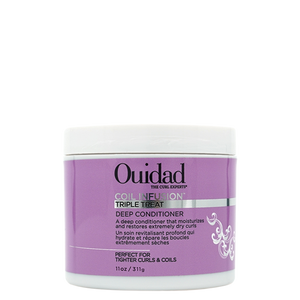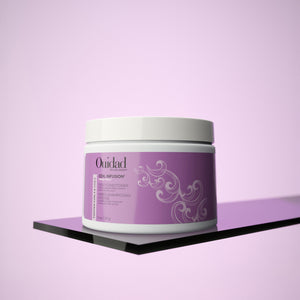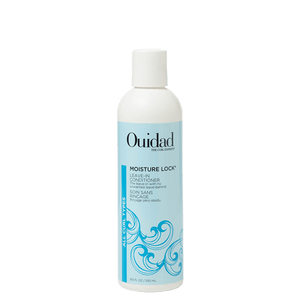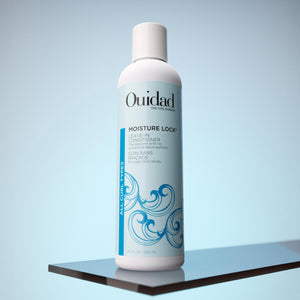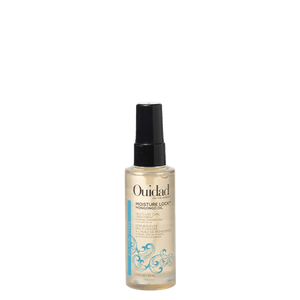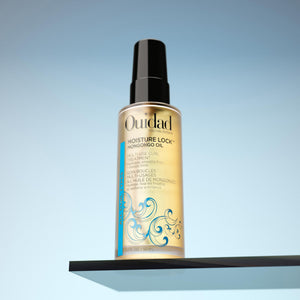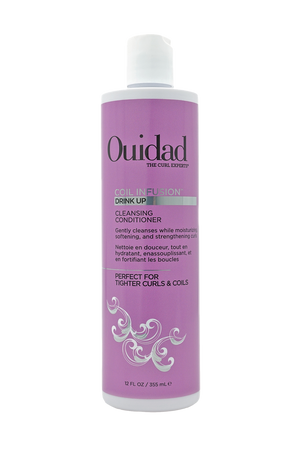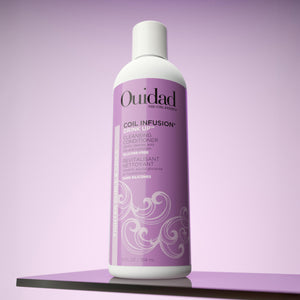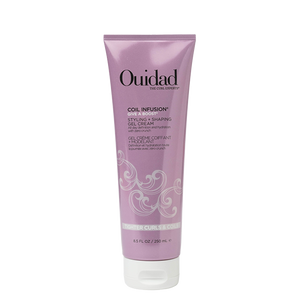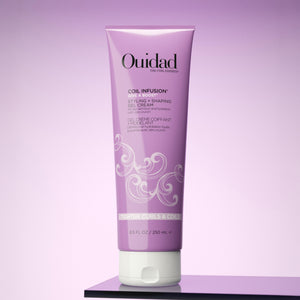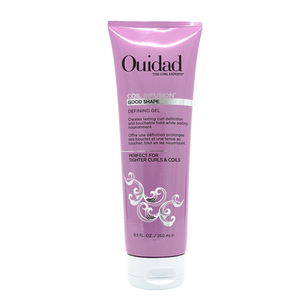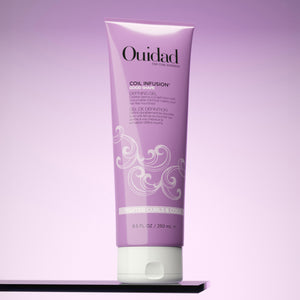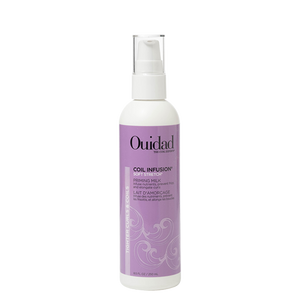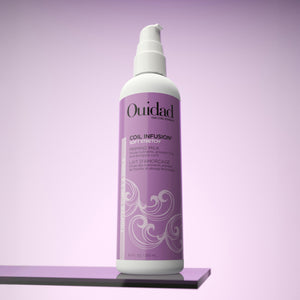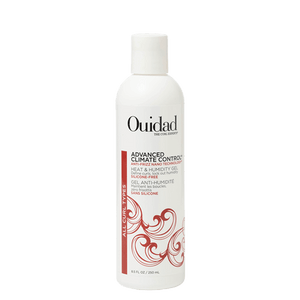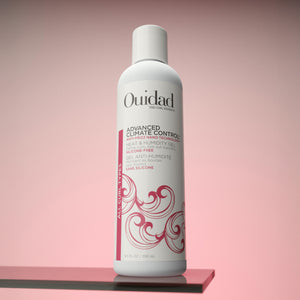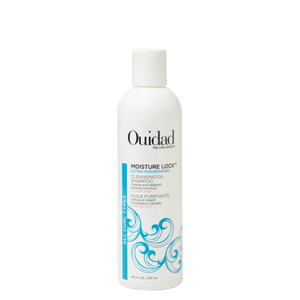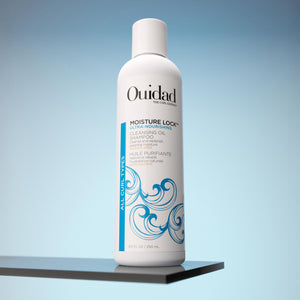Discover how to care for coily hair with tips, product picks, and routines for Type 4 curls—4A, 4B, and 4C—year-round.
What is coily hair?
Coily hair is the tightest curl pattern in the texture spectrum, characterized by springy coils or zig-zag shapes that range from defined ringlets to dense, cottony strands. Often called Type 4 hair, coily textures are rich in volume, full of character, and uniquely beautiful. But they also come with their own set of care needs.
Coily hair tends to be drier by nature because its shape makes it harder for natural oils to travel from root to tip. It can be fine or coarse, soft or wiry, and frequently includes multiple curl patterns on one head. The key to caring for coily hair is moisture—sealing it in, building it into your routine, and treating your coils like the delicate strands they are.
Why coily hair needs extra care
Because of its structural intricacy, coily hair is more vulnerable to breakage and mechanical stress. This means you’ll want to take extra care during detangling, avoid excessive heat or rough styling, and build in plenty of recovery time between major style changes.
Ingredients that support coily strands
It also thrives on ingredient-rich products formulated specifically for Type 4 textures, think nutrient-dense oils, botanical extracts, and humectants that attract and retain water. Understanding your curl’s porosity and density can also guide your routine, whether you need lightweight hydration layers or richer, more emollient formulas. When you give coily hair the thoughtful attention it deserves, the results are next-level: resilient, defined, and bursting with natural brilliance.

Type 4 hair breakdown: 4A, 4B, 4C
Coily hair falls into the Type 4 category and includes three subtypes, each with its own texture, pattern, and behavior. Understanding these subtypes is key to building a personalized care routine that works with, not against, your natural curl pattern. While all Type 4 hair is tightly coiled, the variation between 4A, 4B, and 4C textures influences how hair responds to products, styles, and environmental stressors.
For example, 4A coils, with their more defined S-shape, may benefit from lightweight gels and creams that enhance curl definition without causing buildup. On the other hand, 4B and 4C hair, which may have a cotton-like texture and tighter, less defined coils, often thrive with thicker, more emollient products that help elongate the curl and reduce breakage. Coily hair also tends to be the most fragile due to the many bends and twists along the strand, making it more susceptible to damage from heat, dryness, or tension.
That’s why protective styling, moisture layering, and low-manipulation routines are essential for long-term hair health. Recognizing and embracing your specific Type 4 subtype not only helps you choose the right products, it also empowers you to treat your curls with the care and respect they deserve.
|
Type 4A: Defined coils |
Tight, springy coils with a visible S-shape. 4A hair is usually soft and retains more moisture than 4B or 4C but still benefits from extra hydration and gentle care. |
|
Type 4B: Z-shaped coils |
This pattern forms sharper angles or a zig-zag pattern. 4B coils tend to be more voluminous, dense, and more prone to shrinkage and dryness. |
|
Type 4C: Tightest coils |
The most tightly packed curl pattern. 4C hair is highly delicate, experiences the most shrinkage, and has less definition naturally, but it’s incredibly versatile and holds styles well when properly moisturized. |
No matter your exact subtype, all coily textures thrive with consistent moisture, gentle handling, and products that support their structure without weighing them down.
How to care for coily curls year-round
Caring for coily curls means creating a foundation of moisture, protection, and regular maintenance. Here’s what that looks like, season after season.
Start with a moisture-first mindset
Start by thinking of your routine as a hydration cycle: every product and step should contribute to building and sealing moisture into the strands. That means using a gentle cleanser that won’t strip your natural oils, followed by a rich conditioner that penetrates deeply. Layering is key, after conditioning, apply a leave-in, then seal with an oil or cream to lock it all in. And don’t forget regular deep conditioning sessions to replenish elasticity and strength.
Don’t skip protection
Just as important is protecting your curls from the elements and mechanical damage. That includes choosing low-manipulation styles, sleeping with a satin scarf or bonnet, and detangling with care. Consistency is everything. A solid routine doesn’t need to be complicated, but it should be intentional, tailored to your hair’s unique needs, the season, and your lifestyle. Whether your coils are fine or coarse, low or high porosity, setting up a reliable rhythm of care will help your curls stay strong, defined, and beautifully healthy.
Cleansing
Look for sulfate-free, low-lather cleansers that gently remove buildup while keeping moisture intact. Coily hair doesn’t need to be shampooed as frequently, once a week or every 10 days is a good baseline. Because coily strands are more fragile and less coated in natural oils, over-cleansing can easily strip them of the moisture they need to stay healthy. Instead of daily washes, consider refreshing your scalp and strands in between wash days with a co-wash, water rinse, or light scalp massage using an oil or curl refresher spray.
On shampoo days, focus cleanser on your scalp, gently massaging to lift buildup without creating friction on the hair shaft. Let the lather rinse down through the ends rather than scrubbing the entire length of the hair. If you’re dealing with product buildup, try incorporating a clarifying shampoo once a month to reset your strands without disrupting their moisture balance. Choosing the right cleanser can help maintain hydration and leave your curls feeling soft, clean, and ready to absorb moisture from the rest of your routine.
Try: Water Works Clarifying Shampoo – for occasional detox when buildup or minerals collect
Moisturizing
Moisture is everything for coily curls. After cleansing, use a rich conditioner or mask, then follow with a leave-in and seal with oil. This multi-step approach helps trap hydration inside the hair shaft while protecting the outer cuticle from drying out. Because coily hair is naturally more porous and prone to moisture loss, layering hydration is key to maintaining softness and elasticity. Don’t be afraid to cocktail products that work well together, like mixing a cream and an oil or applying a hydrating mist between layers. Look for ingredients like aloe vera, shea butter, glycerin, and coconut oil that draw and hold moisture.
Consider adding a weekly steam treatment or hot oil treatment to help open the cuticle and infuse deeper moisture. When applying products, always work in sections to ensure even coverage, especially if your hair is dense or has multiple curl patterns. Pay special attention to your ends, which are the oldest and most fragile parts of your hair. With the right moisture strategy, your coils will stay bouncy, healthy, and well-nourished between washes.
Try:
-
Coil Infusions Triple Treat Deep Conditioner – restores elasticity and hydration
-
Moisture Lock Leave-In Conditioner – detangles and protects
-
Moisture Lock Mongongo Oil – seals in moisture and adds shine

Detangling
Always detangle coily hair when it’s wet and saturated with conditioner. Use your fingers or a wide-tooth comb, starting at the ends and working up to the roots. Detangling dry or barely damp hair can lead to breakage, especially with the tight bends and curves of coily strands. Be patient, rushing through detangling can cause unnecessary tension and damage to your hair. For extra slip, try adding a bit of leave-in conditioner or a detangling spray if needed. You can also use your hands to gently separate larger tangles before combing through smaller sections. Regular detangling keeps your curls healthy, defined, and prevents knots from turning into breakage down the line.
Tips:
-
Section your hair first to make detangling more manageable
-
Use plenty of slip from your conditioner or leave-in
Deep conditioning
Make deep conditioning a weekly habit. Coily hair needs the extra moisture and protein balance to stay resilient, especially if you use protective styles or heat occasionally. Deep conditioning helps restore elasticity, replenish lost hydration, and strengthen the hair shaft to reduce breakage and split ends. Look for deep conditioners rich in nourishing oils, plant butters, and proteins like hydrolyzed keratin or silk amino acids. For best results, apply to clean, damp hair and use a heat cap or steamer to help open the cuticle and allow the treatment to penetrate more deeply. Leave the mask on for 20–30 minutes, then rinse thoroughly and follow with a leave-in conditioner. If your hair is color-treated or chemically processed, consider deep conditioning twice a week to maintain integrity.
For added benefit, alternate between moisturizing and strengthening masks depending on your hair's current condition. Keeping this step in your routine ensures your curls remain soft, defined, and resilient week after week.
Styling tips for coily hair
Coily curls are incredibly versatile, whether you wear them defined, stretched, or in a protective style. This flexibility allows you to switch up your look while still prioritizing the health of your hair. Defined styles, like wash-and-gos or twist-outs, highlight your natural curl pattern and bring out the springy beauty of your coils. Stretched styles such as braid-outs or banding can help minimize shrinkage while still maintaining shape and bounce. Protective styles, including braids, wigs, buns, and flat twists, can help safeguard your ends and reduce daily manipulation, giving your strands a much-needed break. The key is to rotate between these styles thoughtfully, ensuring your hair has time to rest and recover. Before any style, always start with a moisturized, detangled base, and follow up with products that enhance your curl's strength, softness, and definition. With the right care, coily hair becomes a canvas for creative expression, full of personality and limitless styling possibilities.
Protective styling
Braids, twists, bantu knots, and updos help reduce manipulation and retain moisture. Make sure you’re prepping your hair with moisturizing products before styling and giving your scalp love during the process.
Wash and go
Apply leave-in and a defining cream or gel to soaking wet hair. Rake product through in sections, then gently scrunch or finger coil for definition. Air dry or diffuse with low heat.
Try:
-
Coil Infusions Soft Stretch Priming Milk – great prep for definition and moisture
-
Coil Infusions Good Shape Defining Gel – holds curl shape without crunch
Twist-outs and braid-outs
These help define curls while stretching them to reduce shrinkage. Start on damp hair, apply cream or gel, twist or braid, then unravel once fully dry. Twist-outs and braid-outs are especially useful for enhancing curl definition while also providing a bit more length to your natural style. They’re also a great way to set your hair for multi-day wear, since the resulting curls tend to hold up well with minimal refreshing. For best results, use a product that offers both moisture and hold, and make sure each section is smooth and evenly coated before twisting or braiding.
Once your hair is completely dry, gently unravel the twists using a light oil to reduce frizz and boost shine. You can separate each curl further for added volume, or leave them intact for a more defined look. These styles are also excellent for transitioning hair, helping to blend multiple textures while reducing manipulation and breakage.
Managing seasonal changes
Summer humidity
Coily curls expand easily in humid climates. Look for products that seal in moisture while protecting your strands from frizz. Humidity causes the cuticle layer of the hair to lift, allowing excess moisture in the air to swell the hair shaft, which leads to unwanted volume, puffiness, and frizz. Combat this by building a humidity-resistant barrier with styling gels or creams that contain ingredients like polyquaterniums, amino acids, or silicone alternatives designed to block moisture without drying out your curls.
Apply products in layers, starting with a leave-in conditioner followed by a curl-defining gel or cream. Try smoothing each section with praying hands or finger-coiling methods to help lay the cuticle flat. Protective styles like braids or buns can also help keep humidity from wreaking havoc on your look. Refresh your style midweek with a light curl mist or humidity control spray to keep your coils sleek and defined even on the stickiest days.
Tips:
-
Layer leave-in and gel for extra hold
-
Avoid heavy butters in extreme heat, which can melt and weigh curls down
Try:
-
Advanced Climate Control Heat & Humidity Gel: humidity defense without crunch
-
Coil Infusions Good Shape Defining Gel: provides structure and bounce

Winter dryness
Indoor heat, dry air, and wool fabrics can pull moisture from your strands. Focus on layering hydration and sealing every wash day. During winter months, coily hair is especially vulnerable to losing moisture due to harsh environmental factors. Heated indoor spaces zap water content from the air and from your curls, while coarse fabrics like wool hats and scarves can create friction and lead to breakage. To protect your strands, start your routine with a nourishing leave-in conditioner and follow up with a rich cream or oil that seals moisture into the cuticle. Protective styles like twists, braids, or buns are also helpful in reducing daily manipulation and keeping ends tucked away from drying fabrics.
Don’t forget to moisturize midweek if your hair feels dry, using a lightweight mist or applying a small amount of cream can help revive softness and shine between wash days.
Tips:
-
Use thicker creams or butters in colder months
-
Deep condition weekly and sleep in a satin bonnet or on a silk pillowcase
Best products for coily curls
Here’s your go-to coily curl lineup: This list brings together Ouidad’s most curl-loving essentials for cleansing, conditioning, styling, and finishing coily hair. Each product has been handpicked to support hydration, definition, and overall hair health—no matter your curl density or Type 4 subtype. From gentle clarifiers that remove buildup without stripping, to defining gels that resist humidity and hold your curl pattern in place, these products are designed to work together and elevate your full routine. Keep them in rotation based on the season or your styling goals.

Cleanse
-
Or if you’re dealing with product build-up, try the Water Works Clarifying Shampoo
Condition
-
And after conditioner, Coil Infusion® Soft Stretch Priming Milk
Style & define
-
If you’re prioritizing elongation, try our Coil Infusion® Give A Boost® Styling + Shaping Gel Cream
Seal & finish
-
Botanical Boost Curl Refreshing Spray (for midweek refreshes)
FAQs about coily hair
Q: How often should I wash my coily hair?
A: Once a week or every 10 days is usually enough. You can co-wash or rinse with water in between if needed.
Q: What’s the best way to grow coily hair?
A: Focus on moisture, gentle handling, and protective styling. Healthy growth comes from the scalp, but length retention happens when you protect the ends.
Q: How do I reduce shrinkage?
A: Use stretch styles like braid-outs or twists, or try tension methods like banding. Shrinkage is natural, but stretching helps switch up your look.
Q: Is heat bad for coily hair?
A: Occasional heat styling is fine with proper prep. Use a heat protectant, keep the temperature moderate, and don’t skip deep conditioning after.
Caring for coily hair, your way
Coily curls are bold, beautiful, and one of the most dynamic hair textures around. With the right products, consistent care, and a routine that centers moisture, they’re also incredibly manageable.
Whether you’re just beginning your natural hair journey or fine-tuning your approach, this guide gives you the foundation for caring for coily curls with confidence. From understanding your Type 4 subtype to mastering the art of moisture layering and detangling, you now have the tools to create a routine that celebrates and supports your hair’s unique texture. We’ve covered essential techniques for cleansing, conditioning, and protective styling, plus seasonal strategies and product picks that keep your curls resilient year-round. Coily hair may need extra care, but when treated with intention, it rewards you with definition, versatility, and unmatched vibrance. Embrace the journey, stay consistent, and don’t be afraid to experiment until you find what works best for you. There’s no one-size-fits-all approach, but with knowledge and patience, your coils will flourish.
Explore these two collections: Coil Infusion™ and Moisture Lock™ best sellers




